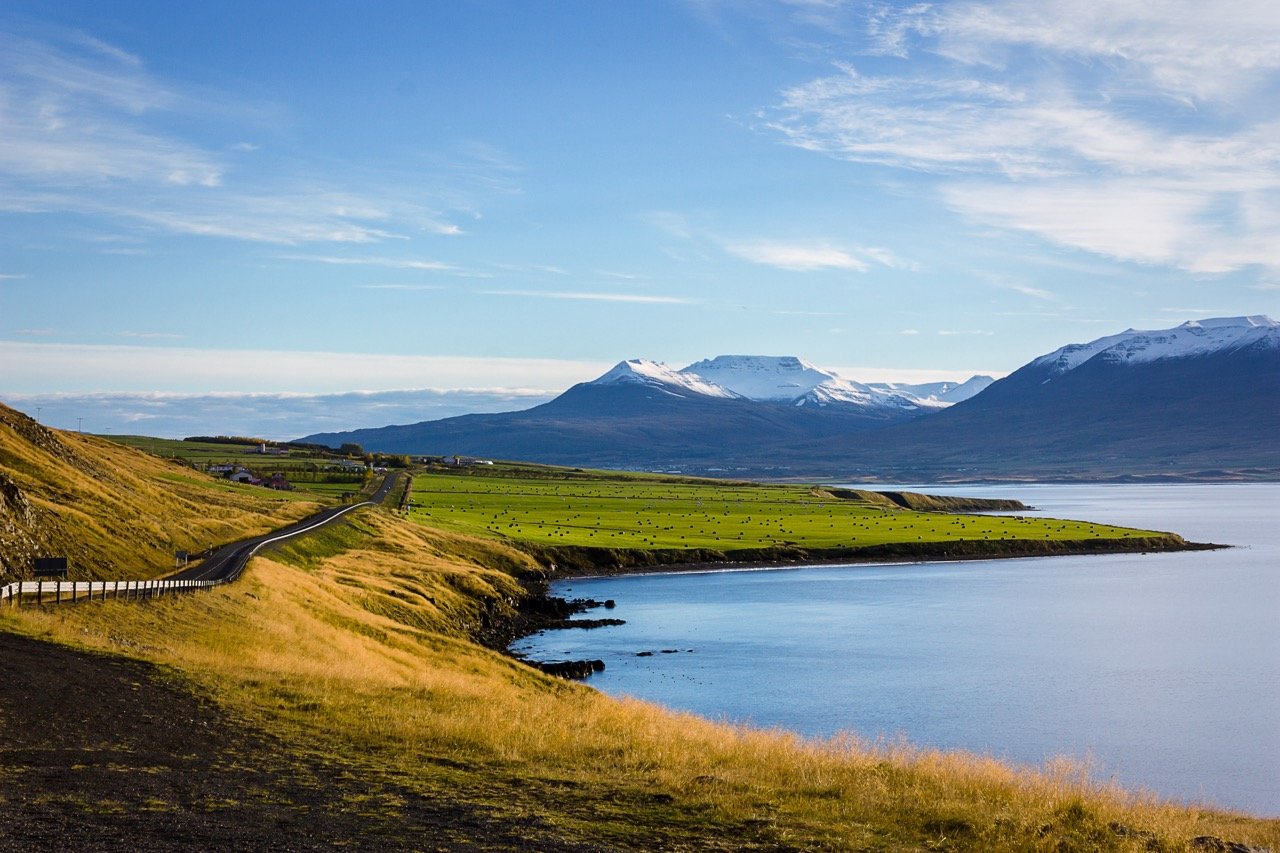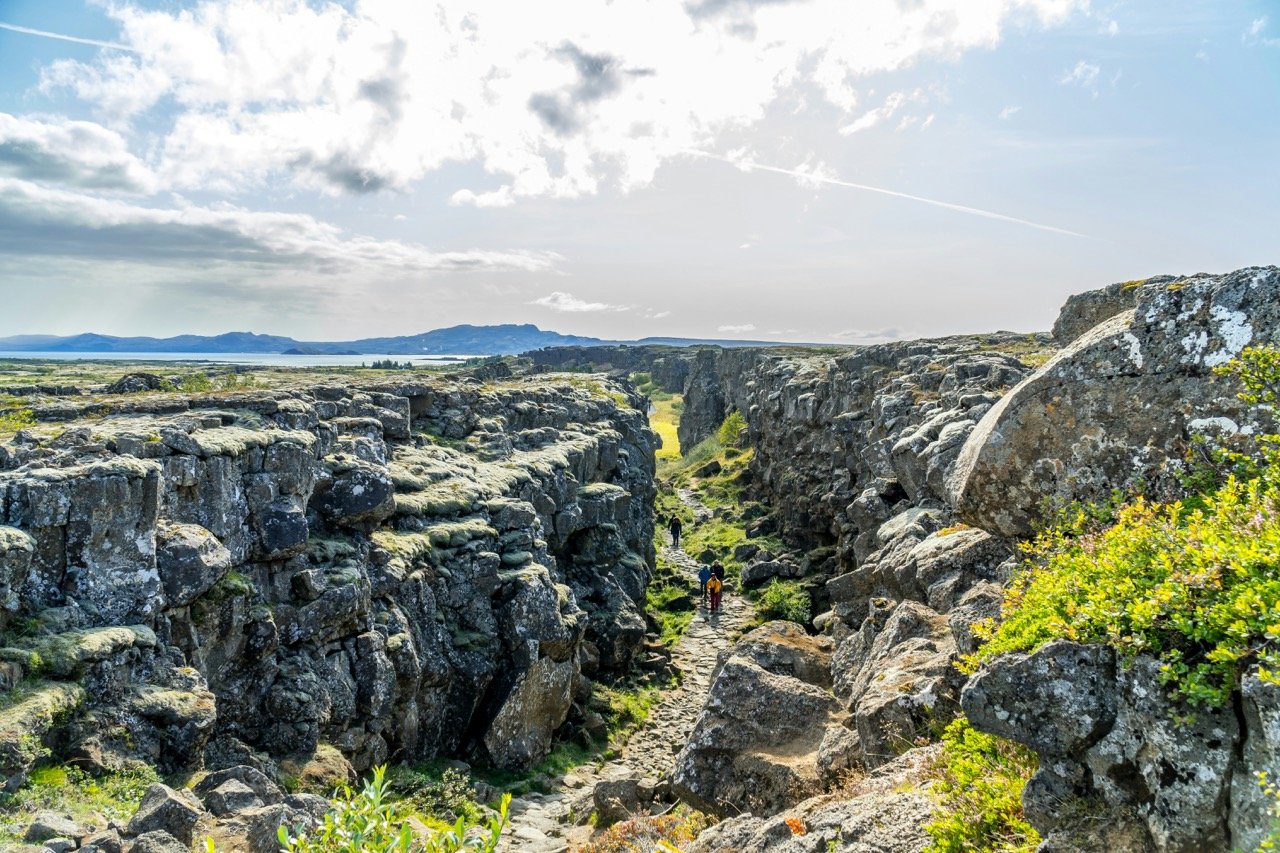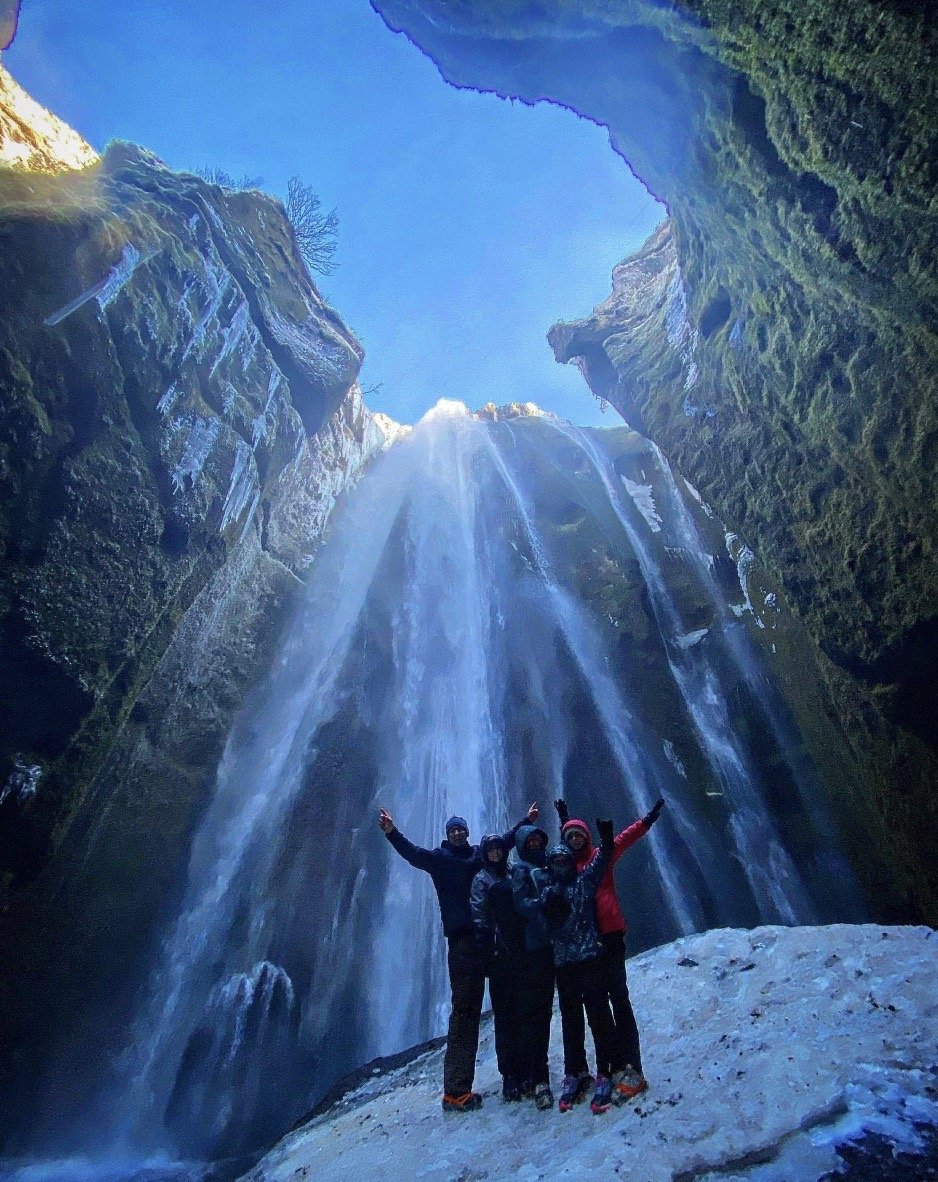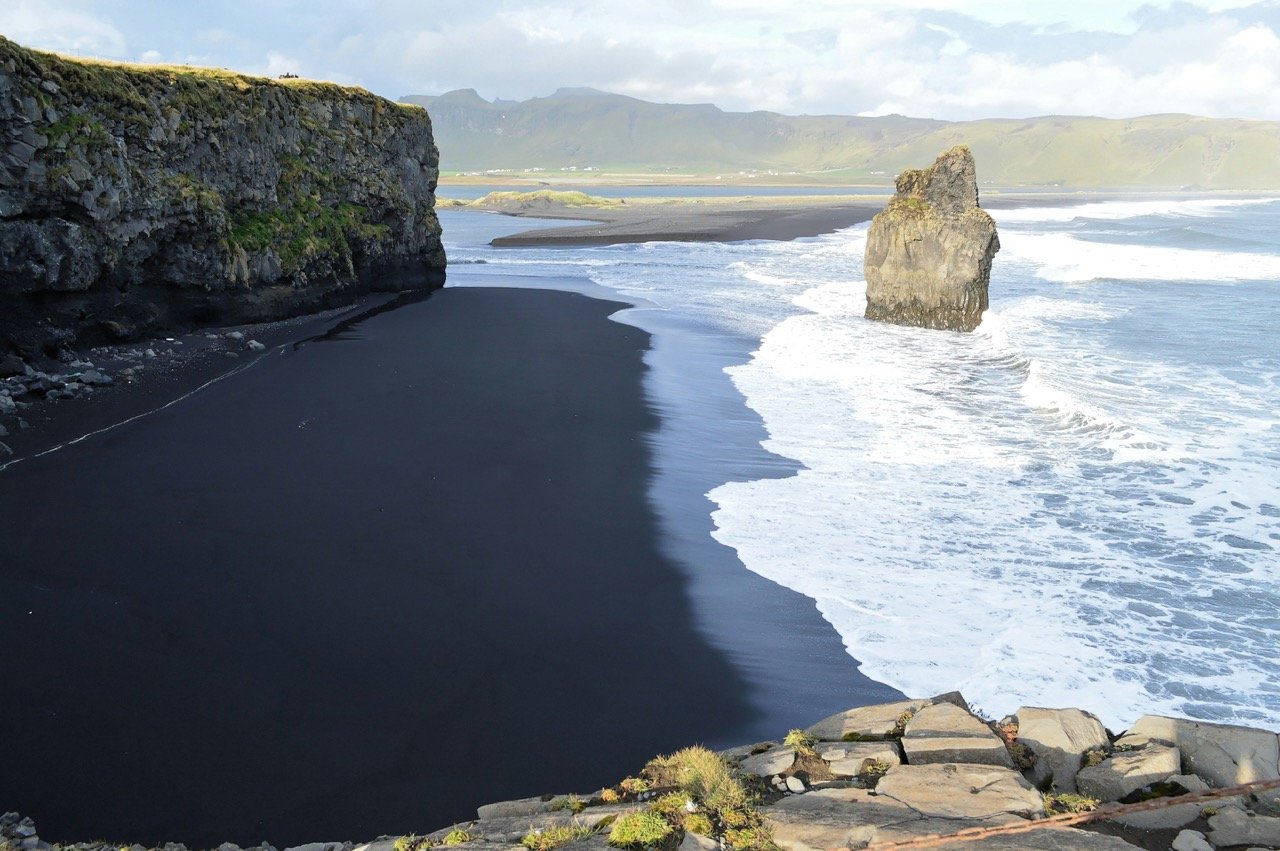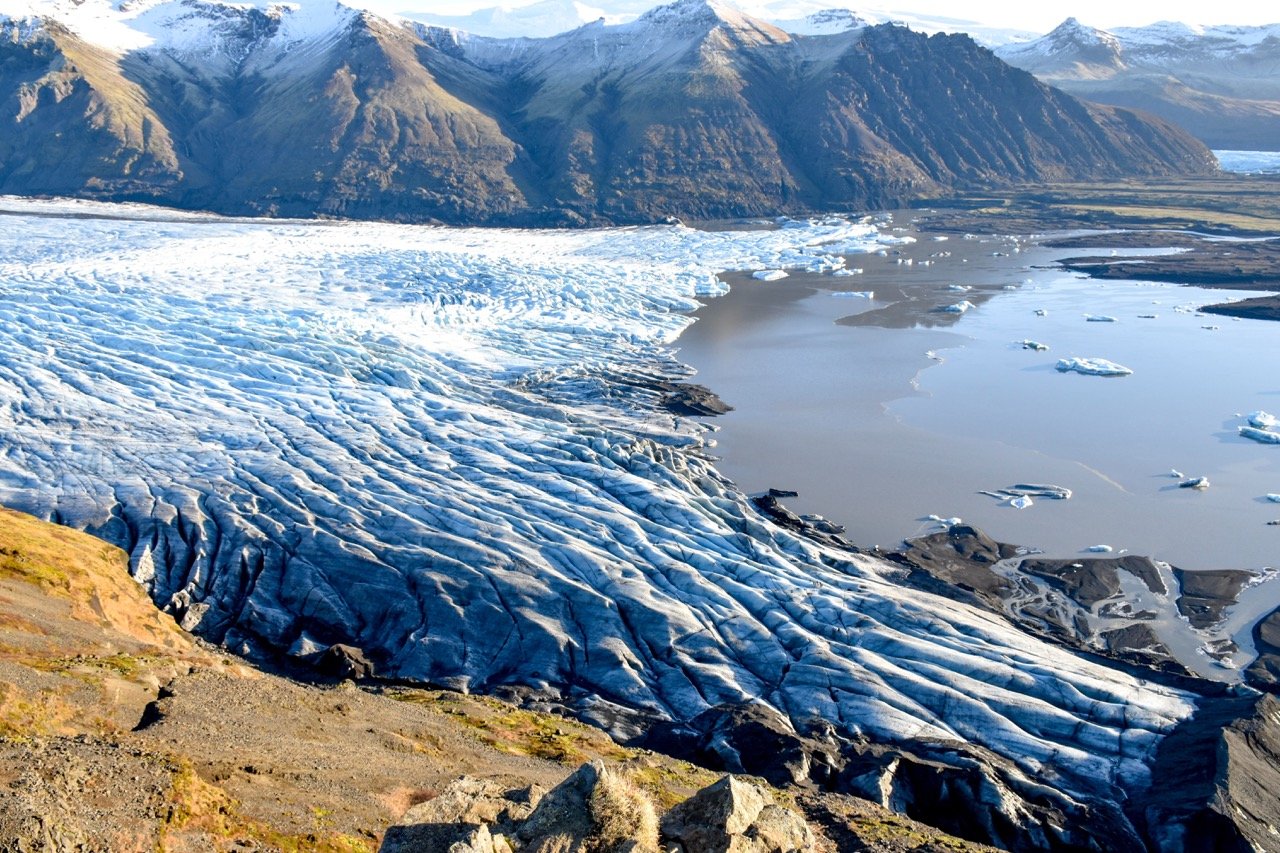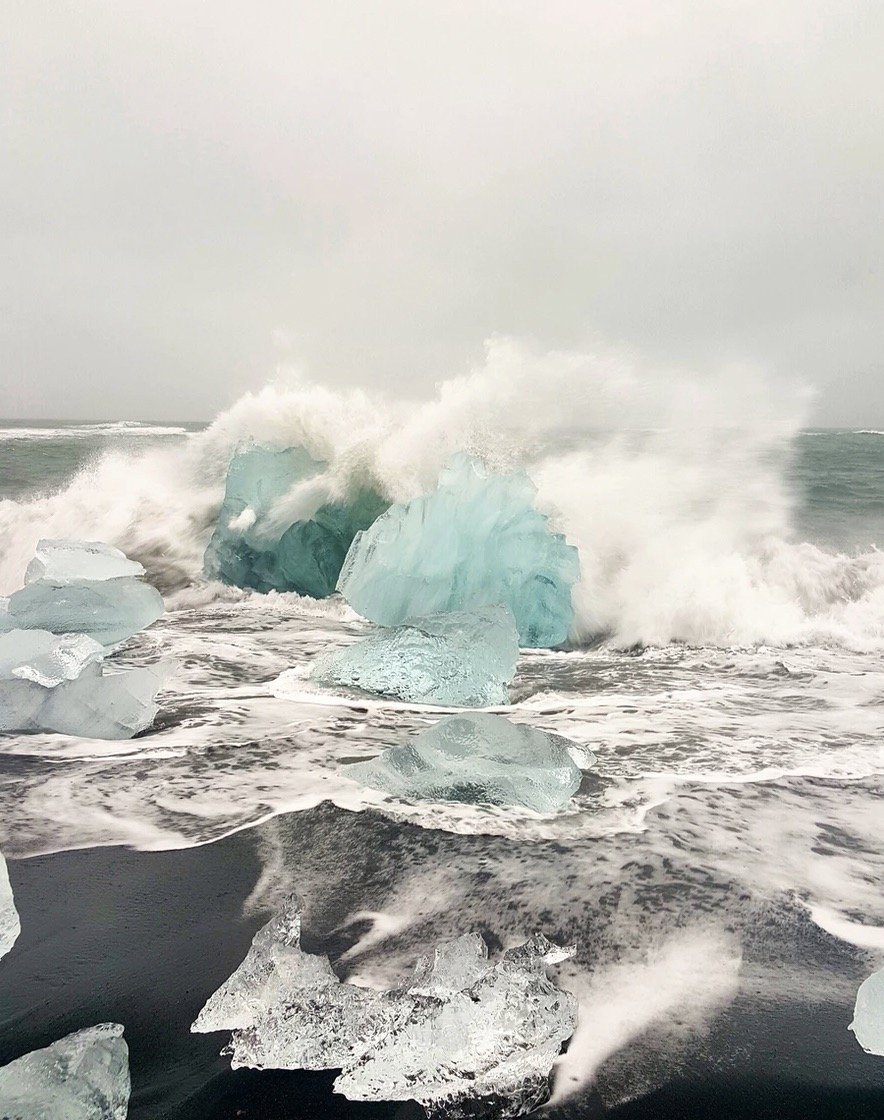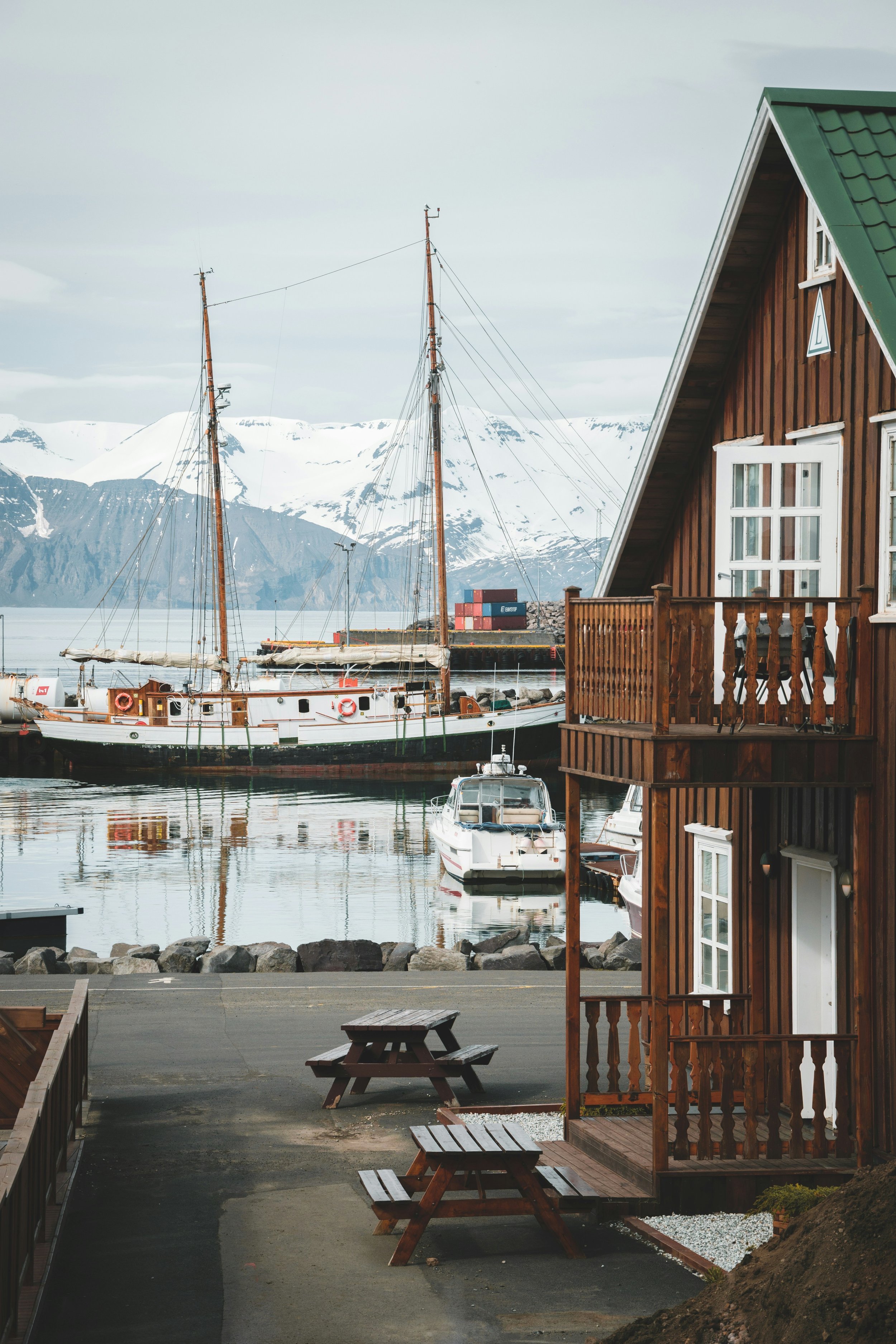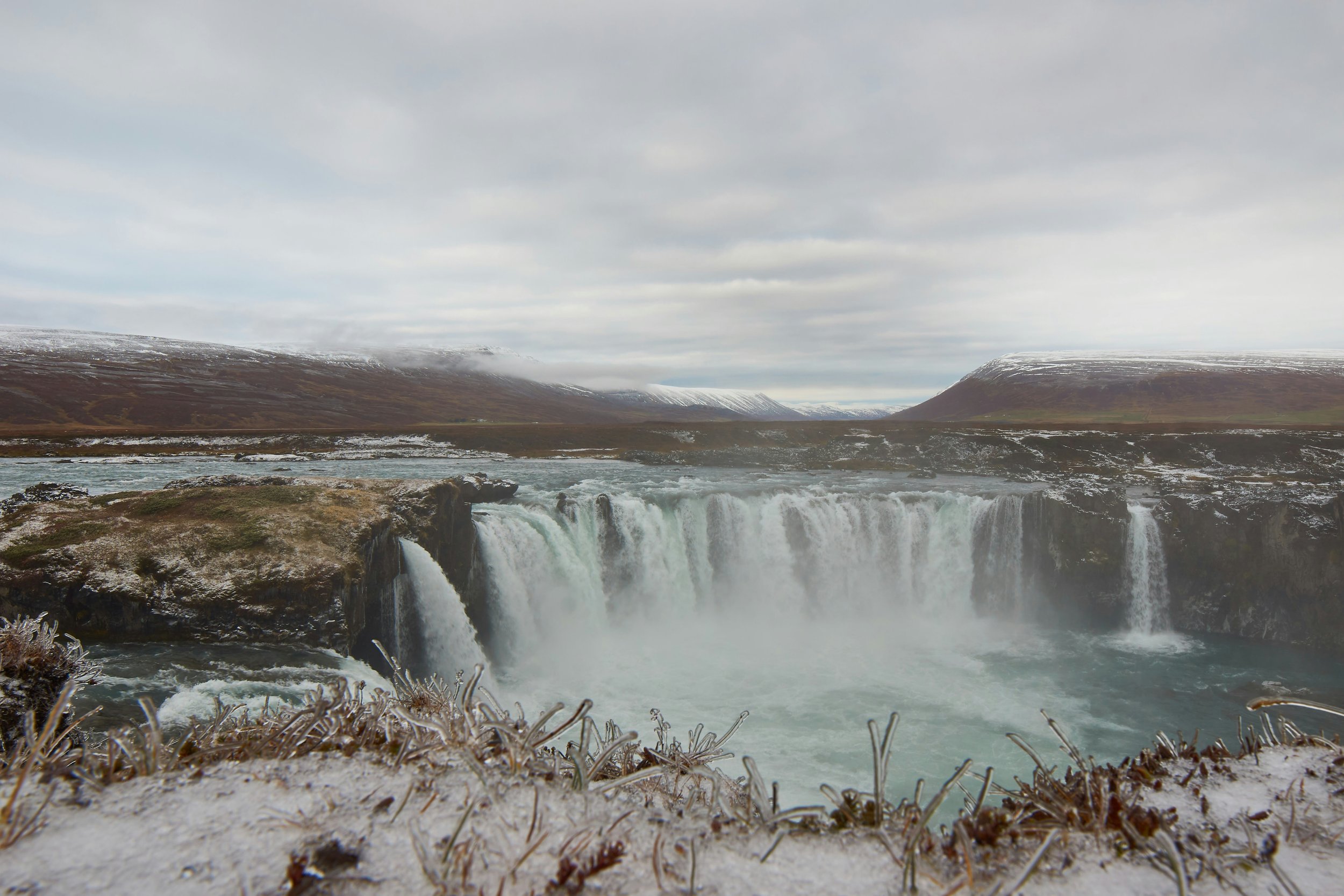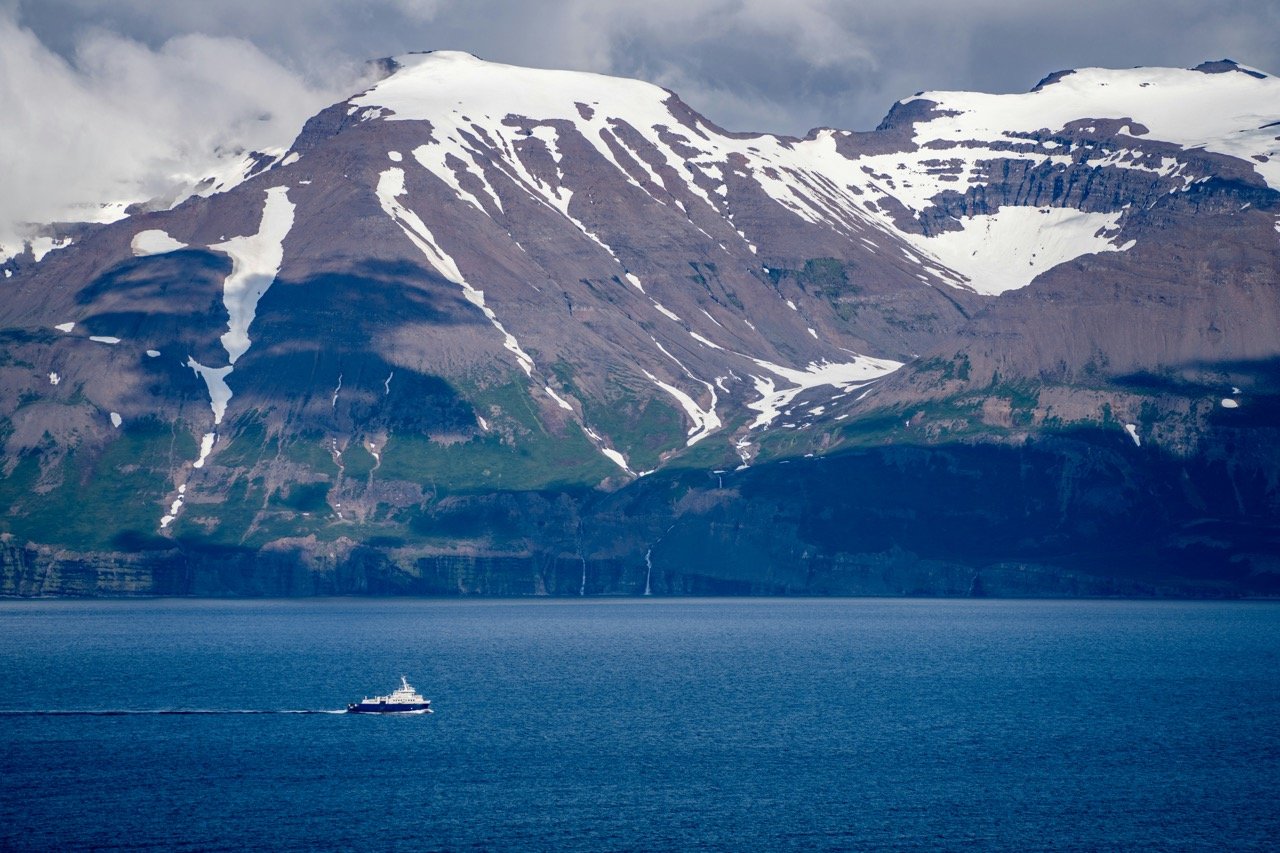10 Day Iceland Ring Road Itinerary
Affiliate disclosure: some of the links in this article are affiliate links. If you book using one of them, we’ll earn a small commission. All of our info is free to read and free of ads, so we appreciate it!
Iceland’s ring road is the country’s famous highway that does a loop around the entire coastline. Taking you past most of Iceland’s jaw-dropping sights, it’s pretty much the perfect route for a memorable road trip.
And with 10 days in the country, you’ll have just the right amount of time to do it! While two weeks is ideal so that you can take it easy and explore more in depth, you can manage a very solid trip in 10 days that hits all the big sights while still making time for some detours and improvisation along the way.
Of course, there’s always more that can be seen and done, and 10 days won’t let you do it. But for that, you’ll just have to come back for another visit.
Table of Contents


Is 10 days enough time for the Ring Road?
Before we get into the itinerary, let’s discuss this obvious question.
Provided you’re coming in the summer months, the Ring Road is doable in 10 days if you plan well and are ready to do a lot of driving each day. Even so, I usually recommend 14 days as the ideal amount of time.
Now, there are people who will tell you that you can do the whole circuit in as little as 7 days, and while it’s true that you can drive it in that time, you won’t be able to enjoy it. A 7-day ride along the Ring Road is simply a mad dash where you rush crazily from one sight to the next, without ever having time to slow down and actually see anything.
10 days gives you enough time to make stops in some pleasant towns, do some hiking, relax at hot springs, and make an occasional detour.
Keep in mind that the Ring Road encircles just about the entire country and there are spectacular places to visit all along the route, meaning that even when driving times on a given day are relatively short, you’ll likely be getting out of the car for frequent stops, some of which might turn into multi-hour hikes or excursions (boat trips, ATV rides, glacier hikes, etc.).
Itinerary overview
With all of the above in mind, I’ve put together this itinerary to let you cover the whole route in 10 days while still making plenty of stops.
You won’t really have time to divert off the road too much, but you also won’t ever have to rush and you’ll be able to make stops along the way at everywhere that interests you. You’ll also have enough time for you to do some excursions/activities, like a Zodiac boat ride, a glacial hike, some ATV riding, and plenty of hiking.
Where you’ll go
Because you only have 10 days, you’ll be sticking pretty close to the physical Ring Road for the entire trip.
You’ll start off in the Golden Circle for your first day, then cruise along the South Coast to Vik on your second.
From there, you’ll begin heading north, with your first major point of interest being Vatnajökull National Park. To cover the ground between Vik and the park and allow you time for activities like glacier hiking and Zodiac boating, you’ll need two days for this portion of the trip.
On your 5th day you’ll see the East Fjords, one of my favorite landscapes in the entire country.
On day 6, you’re moving well into the north, stopping by Myvatn Lake before moving on to Akureyri (time for some whale watching) on your 7th day.
For day 8, I have you detour into the very cool Tröllaskagi Peninsula.
Day 9 and 10 are dedicated to exploring the wonderful Snaefelssnes Peninsula, with the afternoon of your last day spent back in Reykjavik.
How you’ll get around
Being a road trip, I hope it’s obvious that you’ll need a car rental to make this plan work. You can’t see the Ring Road any other way.
To find a reasonably priced rental, I always recommend checking on Discover Cars.
Now, let’s take a look at the plan.
Day 1: The Golden Circle
The Golden Circle is one of Iceland’s most famous tourist routes, with a trio of stunning attractions: the historic Thingvellir National Park, the erupting Geysir, and the waterfall Gullfoss.
Brúarhlöð canyon in the Golden Circle
From Reykjavik, it’s so easy to start any trip to Iceland with a tour of the Golden Circle. It makes a lot of sense: you can start off with one of the most touristed parts of the country (and get it out of the way), and easily link up with the ring road afterward.
First up is Thingvellir National Park – only 45 minutes from Reykjavik. Not only does this area have an impressive geological pedigree thanks to the two tectonic plates rising above the ground, but it’s also one of the most important historical locations in the country.
It was here where Iceland’s Althing (National Parliament) first met in the Viking age when chieftains from all over the country would gather to pass laws, trade, relay news, and settle disputes.
Within the park, you can hike to a couple of waterfalls and walk the very cool trail that runs through the Almannagjá fault line.
Walking the trail within the Almannagjá fault line in Thingvellir park
From Thingvellir, it’s about another 45-minute drive to the Haukadalur geothermal valley, more often called Geysir. It’s here where the geyser called Strokkur erupts in a plume of water and steam every 6–10 minutes, wowing audiences as they look on.
Don’t leave without paying a quick stop to the Great Geysir, from which all other geysers around the world are named. It’s only erupted twice since the year 2000, but who knows, you might get lucky.
An eruption from Strokkur geyser. Photo: Diego Delso, CC BY-SA 4.0, via Wikimedia Commons
Then, Gullfoss waterfall awaits at the end of the Golden Circle, thundering down a set of cliffs in an impressive display of power.
Afterward, you could also finish your day with a soak at the Secret Lagoon in Flúðir before retreating to a warm hotel for the evening. There are plenty to choose from in the area.
Gulfoss waterfall
Overnight in Flúðir
Flúðir is a cute town with a few good hotel options. It’s not as big or as busy as other towns near to the Golden Circle, but that means that hotel prices are generally much more reasonable.
Here are a few places I recommend:
Gardur Stay Inn - $250 USD
Blue Hotel Fagrilundur - $160-350 USD
Hill Hotel at Fludir - $150 USD
Klettar Tower - $150 USD
Day 2: South Iceland to Vik
Today, you’ll head south to link up with the ring road and venture into South Iceland, a region where waterfalls charge off the highland shelf, glaciers sit atop brooding volcanoes, and powerful waves smash into the coast of black sand.
Vik and its famous church
Leave the Golden Circle area and you’ll quickly find yourself on the ring road. Turning south takes you through a few small villages, but it’s not until you get closer to the coast do the natural attractions begin – and there are a lot of them squeezed into a small area.
The first stop is the waterfall Seljalandsfoss, shooting off the cliffs and glimpsed from afar as you travel along the ring road.
Also in the area is a second waterfall called Gljúfrabúi, hidden within the cliffs north of Seljalandsfoss. Clamber into the small gorge to see the waterfall as it drops down from a hole in the cliffs above, but don’t forget your raincoat.
30 minutes further brings you to Skogafoss, one of Iceland’s most beloved waterfalls. A perfect sheet of water crashing down between moss-laden cliffs, it’s a beautiful sight. You can also climb to the top of the cliffs for a different perspective.
The trails to all these waterfalls are fairly short and they're very well signposted, so you don't need to download maps or use any fancy apps to get to them. Skofagoss potentially is the longest to visit because you can do a walk that leads to the top (a lot of stairs). Give yourself anywhere from 45 minutes to 2 hours at the two waterfalls, depending on how much walking you want to do.
Skogafoss
Seljalandsfoss waterfall. Photo: Jakub Hałun, CC BY 4.0, via Wikimedia Commons
Gljufrabui waterfall in winter
Nearby to Skogafoss is another waterfall called Kvernufoss, well worth the short walk into the valley just to the east of the Skógar History Museum.
Further south, the coast has some stunning attractions. Dyrhólaey Peninsula offers panoramic views over the black sand beaches below and the mountainous interior, while Reynisfjara is the country’s most famous black sand beach, best visited in the late afternoon or early evening after the tour buses have returned to Reykjavik.
Then, it’s onward to Vik, a busy little hamlet on the south coast with hotels and restaurants for the night.
Dyrhólaey Arch on the Dyrhólaey Peninsula
Reynisfjara beach
Overnight in Vik
Vik is a fun place to spend the night, and you’re sure to encounter plenty of other travelers too. You have restaurants, bars, a grocery store, gas stations, tour operators, and anything else you could need. You have lots of accommodation options in the countryside outside of town, but I think you should stay in the center.
Here are some hotels I like:
Hotel Vik I Myrdal - $350 USD
Hotel Kría - $230 USD
Hotel Katla - $220-350 USD
The Barn - $100-200 USD.
Day 3: Fjaðrárgljúfur canyon, Skaftafell and Svartifoss, Vatanajokull Glacier
Today you’re driving from Vik to Vatnajökull park and the Skaftafell wilderness area. Plan on spending the day hiking, glacier walking, snowmobiling, and any other outdoor/adventure activities that peak your interest.
Fjaðrárgljúfur canyon
On day 3 of the ring road itinerary, you'll drive from Vik towards Vatnajökull National Park, which protects Iceland's largest ice cap and the surrounding landscapes shaped by the glacier. The drive offers stunning scenery with landscapes dominated by eerie lava fields and vast swathes of black sand.
Depart from Vik in the early morning heading in the direction of the Skaftafell preserve within Vatnajökull park. The drive takes around 1 hour and 40 minutes, although a bit longer if you make a stop to walk within (or atop) the twisting glacial canyon Fjaðrárgljúfur near the small village of Kirkjubæjarklaustur. The walk is about 2 miles long and totally flat. Here's the route on AllTrails.
Skaftafell is home to some of Iceland’s most gorgeous scenery. Hit the trails and you’ll quickly find yourself exploring the valleys that cut into the icecap above, with glacier tongues flowing down toward sea level, their runoff draining out to the ocean through a vast and flat plain of black sand.
The hike to Svartifoss waterfall - beautiful cascades of powerful running water that plunge over grey basalt columns - begins at the Skaftafell visitor center and will take about 2 hours round trip. Along the hike, you should stop at the Sjónarnípa viewpoint for a bird's-eye view of the glacier tongue Skaftafellsjökull.
Vatnajökull Glacier is the best choice in Iceland for a glacier hike, so make sure to jump on a tour while you’re in the area.
You also have a couple of full-day hikes in this area as well as a host outdoor/adventure activities, so check out your options well in advance.
Skaftafellsjökull glacier tongue seen from the Sjónarnípa viewpoint. Photo: Justraveling.com, CC BY-SA 4.0, via Wikimedia Commons
Svartifoss waterfall
A very icy hike on Vatnajökull Glacier
Overnight in Kirkjubæjarklaustur
Kirkjubæjarklaustur is a tiny little town on the Ring road, between Vik and Hofn. There’s nothing to see or do, but its proximity to Vatnajökull makes it ideal for an overnight. It’s about 1-hour from town to Skaftafell, and a bit further to the lagoons.
To minimize driving, staying the night just outside the park is better than returning to Kirkjubæjarklaustur, but there is limited accommodation. You can also look at the coast north of Skaftafell (halfway towards the town of Hofn) where you’ll find some basic 3-star options.
A few of my tried and true hotels are below:
Fosshotel Glacier Lagoon - $300 USD
Hotel Skaftafell - $250 USD
Hotel Klaustur - $200 USD
Hunkubakkar Guesthouse - $200 USD
Landbrot Guesthouse - $200 USD.


Day 4: Vatnajökull National Park and Glacier Lagoons
Today, grab your car and start the day by looping around Vatnajökull’s southern tip toward Múlagljúfur, a lush and green canyon with waterfalls dropping down the sides, running over the gray-basalt cliffs. It's a gorgeous drive.
Múlagljúfur canyon
Then, a short drive onward is the Jökulsárlón Glacier Lagoon, one of Iceland’s most famous sights. For a great experience, book a Zodiac boat tour to get out onto the water and see the glaciers up close. I actually recommend doing your Zodiac tour at the smaller of the two glacier lagoons, Fjallsárlón, as it tends to be much less busy.
In the lake, large icebergs fall off the retreating glacier tongue, crashing into the expansive lagoon where they’re pulled and shaped by the tides and winds. Once they’ve been pulled out to sea, the tide washes them back up onto Diamond Beach, which you should visit next.
Time permitting, the park has all sorts of other activities you could partake in like ice caves, glacier walks, snowmobiling, etc. Give yourself the entire day here.
Before it’s too late in the day, prepare for an hour’s drive to the town of Hofn, where you’ll be spending the night.
Jökulsárlón Glacier Lagoon
Icebergs floating in the lagoon
Waves crashing against little “icebergs” at Diamond Beach
Overnight in Hofn
Höfn is the main settlement in East Iceland. It’s a busy little port town that acts as a homebase for the glacier guides and fishermen who haul in nets of fresh lobster that’s later served in a handful of great restaurants around town.
Fosshotel Vatnajökull - $180-350
Berjaya Iceland Hotels - $150-320 USD
Milk Factory - $140 USD
Arnanes Country Hotel - $125-300 USD
Guesthouse Nypugardar - $90-200 USD
Old Airline Guesthouse - $100 USD
Day 5: The East Fjords
After the south coast, Iceland’s East Fjords are startingly quiet, a place to enjoy scenic drives and stop at the small fishing villages strung along the coast.
Most travelers will zip through the East Fjords on their way north, but there’s a lot to be said for slowing down in this region of Iceland. It’s an area of incredible, and simple, beauty. It also receives very few visitors, so the hikes and viewpoints are often blissfully free of crowds.
Traveling through East Iceland is about stopping by waterfalls without any name, admiring the way the morning sun casts across the jagged mountain peaks, and whiling away an afternoon in a quiet fishing village.
Just outside Höfn is the Stokksnes Peninsula. Getting into it requires paying an entrance fee, but once inside a long bumpy road leads onto the peninsula, which is covered in black sand. There’s a moody beach, the memorable Vestrahorn mountain, and an abandoned World War II radar station, a reminder of the US military presence in Iceland during that time.
Vestrahorn mountain
A sunset drive in the East Fjords
Near to Djúpivogur
From here, there’s nothing but gorgeous countryside as you cruise through the East Fjords. Make sure to pull over often, not just at the dedicated viewpoints, but also in the small towns themselves.
There’s the sleepy town of Djúpivogur, blink-and-you’ll-miss-it Breiðdalsvík, and Stöðvarfjörður, home to a stunning collection of rocks and minerals at Petra’s Stone Collection.
Finish your day in the pretty town of Seyðisfjörður, where you'll spend the night.
A typical view in the East Fjords
The port in Djúpivogur. Photo: Hedwig Storch, CC BY 4.0, via Wikimedia Commons
The road leading up to Seyðisfjörður's lovely church. Photo: Saifunny, CC BY-SA 4.0, via Wikimedia Commons
Overnight in Seyðisfjörður
For the evening, Seyðisfjörður on the coast is a great place to end up. This pretty little town is dwarfed by the mountains on either side, an incredible setting for a night. It’s also the backdoor into Iceland, where the ferry arrives to unload visitors from mainland Europe.
Langahlid Cottages - $500 USD (for a multi-room cottage)
Hotel Aldan The Bank - $250 USD
Við Lónið Guesthouse - $200 USD
Hafaldan HI Hostel - $40 USD (dorms) $200 USD (private rooms)
Day 6: Lake Mývatn
Today you’ll drive toward Lake Mývatn, home to some of Iceland’s most volcanic landscapes.
Lake Mývatn
From the Seyðisfjörður, it’s a long drive - almost 3 hours - along the ring road to Mývatn.
On the way and about 1 hour and 45 minutes into your drive, I'd suggest making a quick detour off the ring road to Stuðlagil Canyon to admire the basalt columns that make up both sides of the canyon, with icy-blue water between them.
Stuðlagil Canyon
Once back onto the route, it's just more gorgeous countryside on the way toward Dettifoss Waterfall, the most powerful waterfall in Europe with an average flow rate of 193m3 every second pouring over the edge. The waterfall is reached via 2 roads leading off of the ring road, about a 30-mintute drive. To admire its raw power from the best viewpoint, make sure to take the paved road on the western side of the canyon to get there, road 862.
Along the way, you should absolutely also stop to admire the Jökulsárgljúfur canyon.
Dettifoss waterfall
Jökulsárgljúfur canyon
Then, it’s onto the area around Lake Mývatn.
This is one of Iceland’s most volcanically active areas, filled with geothermal wonders, lava fields, and volcanic craters. There’s the Krafla volcanic caldera, where you’ll drive past a huge geothermal power station toward a beautiful volcanic crater called Viti.
Back near the ring road, the geothermal area of Hverir feels like another planet, with orange-red earth, steaming fumaroles, and mud pots that hiss, sizzle, and boil.
Viti crater in the Krafla caldera
Hverir geothermal area
Powered by the same volcanic system are the Mývatn Nature Baths, North Iceland’s answer to the Blue Lagoon. Entrance costs about $50 USD, but they're really nice, so I always recommend making the time for a stop (ideally at the end of the day).
And then, on the shores of Lake Mývatn itself, plenty more to keep you busy for a day. There’s the lava field of Dimmuborgir, a volcano called Hverfjall that you can climb, and the underground hot spring cave of Grjótagjá (too hot for swimming). The lake itself is also beautiful and is brimming with bird life.
All these places are almost never more than about 30 minutes apart (and often less), so once you get here, you can pretty well visit all these wonderful attractions in a single day.
One of the pools at the Myvatn Nature Baths. Photo: Artem Kavalerov, CC BY 3.0, via Wikimedia Commons
Overnight in Laugar or Reykjahlíð
Both of these littles towns are near to the Mývatn area (Reykjahlíð really being right at the edge of it), so they’re the logical places to spend the night if you want to avoid having to drive all the way to Akureyri. Laugar has cheaper accommodation.
Fosshotel Myvatn - $200-400 USD
Sel Hotel Myvatn - 180-350 USD
Hotel Laxa - $150-$300 USD
Narfastadir Guesthouse - $200 USD
Breidamyri Farm Apartments - $160 USD
Guesthouse Storu-Laugar - $100 USD
Day 7: Whale Watching in Húsavik and a visit to Akureyri
Húsavík is Iceland’s capital of whale watching; the perfect spot to jump on a tour, running from March until November. Afterward, it’s on to Akureyri, the unofficial capital of North Iceland.
The coast near to Husavik
This morning, gear up for the hour drive from Lake Myvatn to the town of Húsavík on Iceland's northern coast.
Any visit to northeast Iceland between the months of March and November is ideal for a whale-watching tour in Húsavík, so if your trip falls within that time, this is 100% how you should spend your morning.
The town sits on the shores of Skjálfandi Bay, the waters of which are rich in nutrients, attracting plentiful fish and krill, which in turn attracts the whales.
Whale watching tours typically last 3 hours, so you should plan to have lunch in Húsavik afterwards.
A whale watching tour
Whale tail!
Husavik's harbor
From Húsavík, it’s a 1-hour drive to the "city”of Akureyri, the unofficial capital of the north. On your way, make sure to stop off at Goðafoss Waterfall which isn't even a 5-minute detour off the ring road.
With a prime position on the shores of Eyjafjörður (one of Iceland's longest fjords), Akureyri is a lovely town that’s worth a stop for a poke around. There are restaurants, bookshops, and cafes to enjoy, and after a week on the road, you might be inclined to simply take it easy for an afternoon in a bit of civilization. I always do…
Nearby, the Forest Lagoon is another luxurious hot spring, while the Laufas Turf House and History Museum offers a good look at the Iceland of old.
There's plenty to keep you occupied in and around town for your afternoon and evening.
If you plan to hang around here for a bit, I also recommend taking a scenic drive south into the valley, where there’s rich countryside, tempting guesthouses for your evening, and more than a few horse farms.
Goðafoss Waterfal
The coast of Akureyri
Overnight in/around Akureyri
Akureyri is a real charmer of a town. The location, sandwiched between ocean and snow-capped mountains, is stunning and the colorful wooden houses are lovely. You have some nice bars, cafes, and restaurants, and it’s just an all around pleasant place to hang out, with a bit of a frontier feel.
Hotel Kea - $180 USD
Viking Cottages - $200 USD
Akureyri Berjaya Hotel (Icelandair Hotel Akureyri) - $125 USD
Hafdals Hotel - $120 USD
Hotel North - $120 USD
Íslandsbærinn Old Farm - $430 USD (4 bedroom house)
Day 8: The Arctic Coast Way: Northwest Iceland
From Akureyri, leave the ring road behind and head further north, tracing the Arctic Coast Way.
With just a few days left, there’s time to take a mountainous detour along the Tröllaskagi Peninsula in northern Iceland. This area is known for its incredible coastal scenery, while the mountains themselves are a popular spot for heli-skiing and other luxurious adventures.
You’ll also be on one of the best stretches of The Arctic Coast Way, a tourist route launched in 2019 that traces the entire northern coast of Iceland. The route is a celebration of the sub-arctic landscapes, windswept coastline, and cozy villages dotted along the sea.
The entire route, if done existly as the Icelandic tourist board intended, could take over a week, but you'll just be doing a little piece of it to get a taste. The section you're doing is an easy detour off the ring road and it covers the peninsula that's closest to Akureyri.
From Akureyri, you'll leave the ring road behind and head onto Route 82, which eventually tunrs into Route 78. You’ll pass through three villages on Tröllaskagi: Dalvik, Ólafsfjörður, and Siglufjörður. Siglufjörður is the most scenic, clinging to the tip of the peninsula on the edge of a most spectacular fjord.
In the 1940s, this quiet town was the busiest port in Iceland thanks to a bountiful population of herring offshore. People came from the world over to make their fortune, and times were good. It all came crashing down in the 1960s when the herring simply disappeared; the rise and fall is detailed in the fascinating Herring Era Museum (located in Siglufjörður).
Without stopping, it's 1 hour and 15 minutes from Akureyri to Siglufjörður, but you should expect to at least double that in order to account for all the scenic viewpoints you'll want to pull over at.
A fjord in the Tröllaskagi Peninsula along the Arctic Coast Way
An aerial view of Siglufjörður town
From Siglufjörður you'll just continue through the last part of the peninsula, which passes by scenic spots like the village of Hofsós with its famous infinity swimming pool, and Grafarkirkja, the oldest church in Iceland, ultimately bringing you to the little town of Sauðárkrókur. This last section of the route, without stops, takes 1.5 hours.
From Sauðárkrókur, take the road heading towards Hvammstangi, a town that sits at the base of the Vatnsnes Peninsula. It's about 2.5 hours away. TIme permitting, you could take a detour into the peninsula where you’ll find the large rock that resembles an elephant, Hvitserkur, and have a pretty good chance to see some seals lazing on the coast.
Regardless of whether you have time for a detour, end your day in Hvammstangi.
Grafarkirkja church near the town of Hofsós
Hvitserkur rock formation
Overnight in Hvammstangi
Hvammstangi is a tiny little town and you don’t have many options, so just pick whatever you like best and don’t worry about the location.
Hotel Hvammstangi - $140-220 USD
Hvammstangi Cottages - $120 USD
Guesthouse Höfðabraut - $100 USD
Day 9: Snæfellsnes Peninsula
Snæfellsnes is often dubbed ‘Iceland in miniature’ due to it containing everything you’ll see around the rest of the country.
Snæfellsjökull Mountain/Volcano
You have a long drive to start the day today, so get up early to make the most of it.
On your second-to-last day on the road, you'll be visiting the wonderful Snæfellsnes Peninsula. Home to some of Iceland’s most arresting landscapes, the drive onto the peninsula is incredible, with plenty of places to pull over and gawk at the views.
Your first real stop of the day is Stykkishólmur, a beautiful little village dotted with prim Danish merchant houses painted in bright colors. It's a 2.5 hour drive from Hvamstanggi to the town.
From Stykkishólmur's harbor, you can cross over onto Súgandisey Island, where you can enjoy gorgeous views over town and the small islands dotted throughout the fjord.
The village of Stykkishólmur
Next is Grundarfjörður, a busy little fishing village surrounded by stupendous landscapes and the famous Kirkjufell Mountain.
At the tip of the peninsula lies Snæfellsjökull National Park, showcasing Iceland's geological wonders like lava fields, sea stacks, volcanic craters, and black sand beaches.
For the rest of the day, make sure to stop at as many of those sights as you can, like the Djúpalónssandur black sand beach or the Lóndrangar sea stacks.
In the small village of Arnarstapi, you can find a rugged coastline complete with a photogenic sea arch and a handful of accommodation options to choose from. Otherwise, continue east along the peninsula to turn up a few more farm-stays and guesthouses.
The Arnarstapi cliff walk also always provides some wonderful views. It's just two miles and flat, so nothing strenuous. Here's the route on AllTrails.
Kirkjufell Mountain
Djúpalónssandur beach
Arnarstapi
The rocky cliffs of Lóndrangar
Overnight in/around Arnarstapi
Arnarstapi is tiny and aside from a few colorful houses, there’s absolutely nothing to do in town. But it has all the basic services you need in order to refuel and restock, and it puts you in easy reach of Snæfellsjökull National Park.
Hotel Budir - $200 USD
Fosshotel Hellnar - $165 USD
Arnarstapi Hotel - $150 USD
Arnarstapi Cottages - $140 USD
Day 10: Southern Snæfellsnes, West Iceland, & Reykjavik
On your final day, you’ll finish off Snafellsnes Peninsula and venture further into West Iceland, where a knot of rivers and roads are the historic heart of the country.
A pretty scene on the Borgarfjörður coast of West Iceland
Wake up early for a quick detour to the photogenic Búðakirkja, a black wooden church by the coast with the Snæfellsjökull glacier as the perfect backdrop.
Then, drive the remaining bit of the southern edge of the Snaefellsnes peninsula (you covered the northern edge yesterday). It's a short drive, but absoltuely filled with beautiful places and it serves as a reminder that Iceland is actually pretty big and thant it would take you months to truly explore every nook and cranny of the country.
The mountains spine of the peninsula gradually gives way to more open terrain, but hides valleys, waterfalls, and other secrets along the way!
Búðakirkja church
Once you rejoin the ring road at the end of the Snaefellsnes peninsula, you’ll quickly leave it again into the knot of rivers and roads that make up the historic heart of Iceland, the Borgarfjörður region.
This area is centered around the town of Borgarnes, which is Saga country, where a lot of Iceland’s most famous historical figures carried out the stories detailed in the Icelandic Sagas.
As far as attractions go, there’s Deildartunguhver hot spring, Europe’s most powerful, pumping out an astounding 180 liters of boiling water every second and powering everything in a 60-mile radius. There's a trail that runs through the geothermal site (which is exposed) and it's very neat to walk along the water, watching the steam rise into the air and getting a feel for just how hot the water is. It's a quick stop too.
If you haven't had your fill of thermal baths yet, you could stop at the Krauma baths, which are quite nice.
An aerial view of Borgarnes. Photo: Eysteinn Guðni Guðnason, CC BY-SA 4.0, via Wikimedia Commons
Further up the road, the small village of Reykholt is where Snorri Sturluson, a prolific author of many Icelandic Sagas, got down to work.
The museum here, Snorrastofa, is one of the best places to learn about the Sagas. Further inland, a pair of waterfalls draw visitors: Hraunfossar (lava falls) and Barnafossar (children’s falls).
Then, it’s back to Reykjavik. The main route shoots underneath Hvalfjörður via a tunnel, but if you have time and would like to take the scenic route, the old road that traces the fjord is very tempting.
Hraunfossar waterfall
Overnight in Reykjavik


What to know when planning your trip
When to visit
The best time to visit Iceland is either in spring or fall. These are the shoulder seasons, where crowds are fewer yet nearly all tours are still operating. Prices for accommodation and car rental are also cheaper – always helpful in a country as expensive as Iceland.
Visiting in Spring
Traveling in Iceland in spring is a liberating feeling. After a long and dark winter, the country is beginning to wake up. The snow is melting, the rivers are running swiftly, and the days get noticeably longer with each passing week. The slow trickle of visitors is beginning to pick up speed, but it’s still delightfully easy to find a waterfall or a hot spring all to yourself.
Visiting in Fall
Fall is much the same as spring in many respects, but the days begin to get shorter with each passing week, the weather is getting moodier, and the skies threaten snow. But with the darker skies comes a good chance to catch the northern lights, and the rapidly changing weather can be an attraction. In both seasons, almost the entire country is accessible, and the weather is relatively stable.
Visiting in Summer
Summer in Iceland is for mild and stable weather, expensive everything, and big crowds everywhere. Still, if you’re after the best time to see wildlife (puffins and whales), or explore the remote Highlands with a 4x4, this is your best chance.
Visiting in Winter
Visit in winter and Iceland transforms into a different country with frozen waterfalls, snow-covered landscapes, and a shifting gray light during the short hours of daylight. Know that in winter most of the tourism industry shuts down, and roads may close due to the weather, potentially disrupting your plans.
Nevertheless, winter is the ideal time to witness the enchanting northern lights above a snowy landscape – if you’re not trapped in Reykjavik due to a 3-day blizzard.
If you’re visiting in winter, this 10-day itinerary is probably too much; instead, you should plan to stick closer to Reykjavik. Make sure to check out this 5-day itinerary, available year-round barring any winter storms.
How to get around
To truly experience the great outdoors in Iceland, having your own car is essential. Many attractions can only be accessed by car, and without one, you’ll be limited to costly tours or relying on public transport.
Although the latter has improved in recent years, it’s still mainly public buses that connect towns rather than the waterfalls, hot springs, glaciers, and volcanoes in between those towns. Often, a car is crucial for a rewarding journey in Iceland.
Getting around in Iceland is relatively easy, although visitors should know that driving in Iceland is a different beast. Roads are narrow, and strong winds have been known to swoop in and rock smaller vehicles off the side of the road. Speaking of roads, while the ring road may be paved, there are also a lot of dirt tracks as well. Make sure to research well how accessible they are for 2WD vehicles before tackling them.
Road closures
Roads closures can occur for various reasons, even in the summer. There could be a weather warning that locks down all travel in an area, with high winds that could sweep a lighter car off the road. Or there could be a glacial flood that washes away a key bridge. In winter, roads close due to heavy snow, and sometimes it can take a while before the snowplows reach an area.
Do you need a 4x4?
Whether you need a 4x4 or not depends on what you’ll want to see. For the Highlands, a 4x4 is essential – it’s illegal to take a 2WD on any F-roads, and heavy fines await those who do. Other than that, a 4x4 can come in handy in the Westfjords, known for its bumpy roads, or for anyone looking to easily access some sights in the country without worrying about damaging the bottom of the vehicle.
Also, a 4x4 comes in handy if you’re driving in winter, when roads are icy, and the weather is at its most dramatic. Although it should be said that all vehicles are equipped with winter tires from November onward.
Where to rent a car
DiscoverCars is a car rental website that I always recommend checking. It includes offerings from all the major international rental companies as well as lots of smaller local agencies, which frequently have much better pricing. You can often find terrific deals.
Expenses and typical travel costs
Iceland is almost offensively expensive, so throw away any ideas of a budget-friendly trip. Even the wealthiest of travelers are taken aback at the price of some things. The high cost of goods in Iceland is primarily due to the need to import most of it, high taxes on those imports, and a record-high VAT rate.
Key expenses for a trip include car rental, petrol, and accommodation for the night. Note that in the shoulder and off-seasons, prices will be much lower for car rental, accommodation, and flights.
Here are some representative costs of goods/services:
A meal at a mid-range restaurant for two people: between $80 and $120
3-hour glacier hike group tour/private tour: $100/$200
Cheapest daily car rental in summer: $100+
Cheapest daily car rental in winter: $25
Price for a liter of gasoline: $2.20
Night at a mid-range hotel: between $150 and $250
What to pack
Layers are key in Iceland, letting you adjust as the weather cycles through fierce wind, rain, snow, sleet, hail, and sunshine, sometimes in less than 15 minutes.
Layers: to start off with, plan on wearing a base layer of a long sleeve t-shirt and a pair of long underwear each day. From there, layer up with comfortable, casual clothing – a t-shirt and a warmer overlay like a fleece or a good woolen sweater. On the bottom, casual trousers are fine, but for any extensive hiking, a pair of waterproof hiking trousers are essential.
Outerwear: speaking of waterproof, you should always come to Iceland with a waterproof jacket. Weatherproof is fine too, although be sure to pack a proper rain jacket to throw on top if things turn nasty. Also necessary are a pair of warm gloves and a beanie.
Footwear: when it comes to footwear, a pair of comfortable walking shoes are sufficient for light roadside stops and short walks. For anything beyond that, waterproof hiking boots are essential – and note that Iceland isn’t the place to break in a new pair. A pair of flip-flops also comes in handy.
Extras: a pair of sunglasses is a good idea for driving and hiking. In summer a sleeping mask will come in handy, and finally, swimwear and a quick-dry towel are also essential.
Daylight hours
Marooned so far north, the different seasons in Iceland have a profound impact on daylight hours.
In spring, March has around 12 hours of daylight, and by May, that number has jumped to around 18 hours.
Come summer, the daylight is pretty much endless, with ‘nighttime’ just the fuzzy grey-gold light of dawn.
Winter is the opposite, with only around 4 hours of daylight on the shortest day in December.
Traveling in the fall, expect a decreasing amount of daylight as the weeks go by. At the beginning of September, there are around 12 hours, but by the end of November, that number shrinks to 5 hours.
More Iceland travel info
For more advice on planning your trip to Iceland, have a look at some of our other guides and itineraries!


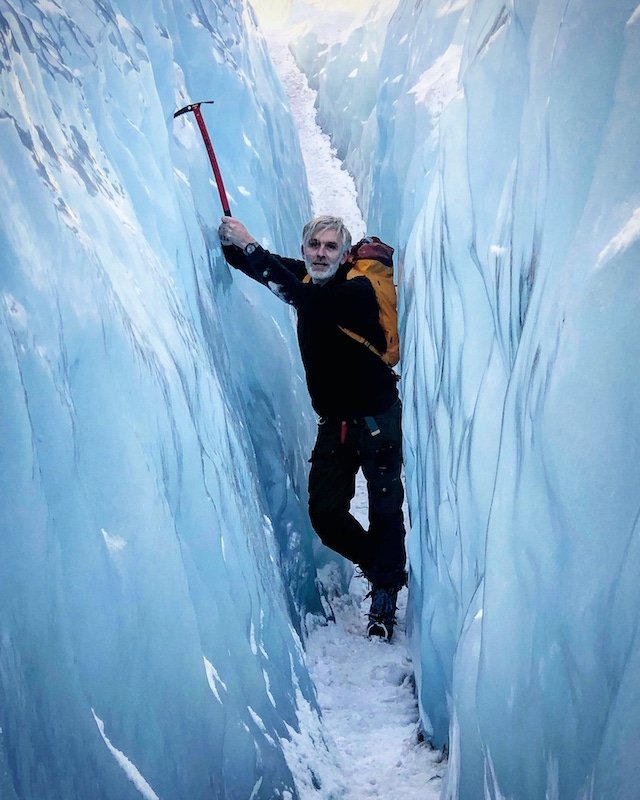
Connect with a Local Expert
